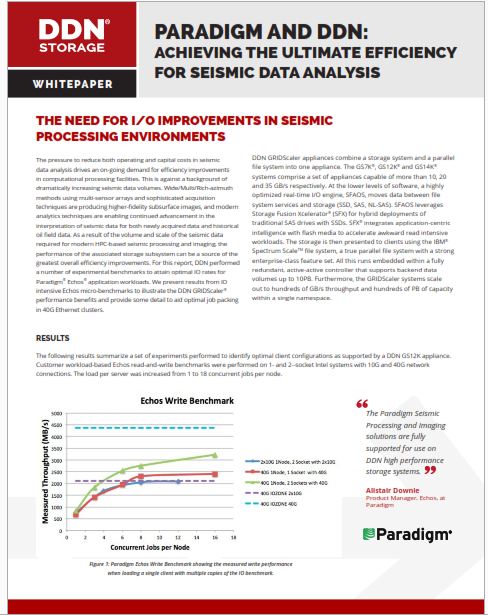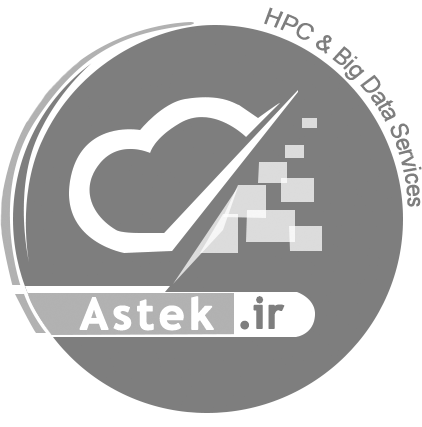
Articles
The pressure to reduce both operating and capital costs in seismic data analysis drives an on-going demand for efficiency improvements in computational processing facilities. This is against a background of dramatically increasing seismic data volumes.
Wide/Multi/Rich-azimuth methods using multi-sensor arrays and sophisticated acquisition techniques are producing higher-fidelity subsurface images, and modern analytics techniques are enabling continued advancement in the interpretation of seismic data for both newly acquired data and historical oil field data.
As a result of the volume and scale of the seismic data required for modern HPC-based seismic processing and imaging, the performance of the associated storage subsystem can be a source of the greatest overall efficiency improvements. For this report, DDN performed a number of experimental benchmarks to attain optimal IO rates for Paradigm® Echos® application workloads.
We present results from IO intensive Echos micro-benchmarks to illustrate the DDN GRIDScaler® performance benefits and provide some detail to aid optimal job packing in 40G Ethernet clusters. To find out the results download this guide.

 English (UK)
English (UK) persian
persian 













